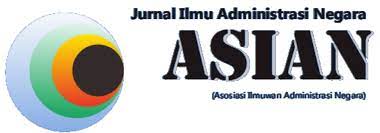Pengaruh Technology Acceptance Model terhadap Work Overload pada Panitera Sidang di Pengadilan Agama Sewilayah Pulau Lombok
DOI:
https://doi.org/10.36085/jmpkp.v5i1.4853Keywords:
Ease of use; Usefulness; TAM; Work OverloadAbstract
Abstract: The application of technological innovation in company services and operations has become a very important and fundamental issue for global competitiveness. The Technology Acceptance Model places the attitude factor of each user behavior with two variables namely perceived usefulness and perceived ease of use. Work overload occurs when work demands exceed an individual's ability to deal with them. The purpose of this study is to analyze the effect of Perceived Usefulness and Perceived Ease Of Use on Work Overload. The type of research used is explanatory research. All indicators used are valid and reliable. Hypothesis testing using PLS (Partial Least Square). The results of the research on Perceived Ease Of Use on Work Overload show a coefficient value of 0.181 with a statistical T value of 1.626 which means it has no effect, and a p-value of 0.105 which means it is not significant, while the results of research related to the effect of Perceived usefulness on Work Overload show a coefficient value of 0.613 with a statistical T value of 3.888 which means it is influential and a p-value of 0.000 which means it is significant.
References
Ayyagari, R., Grover, V., and Purvis, R. (2011). Technostress: Technological Antecedents and Implications. MIS Quarterly, 35(4), 831-858.
Davis, F. D. (1989), Perceived usefulness, perceived ease of use, and user acceptance of information technology. MIS Quarterly, 13(3), 319-340.
Bilbao-Osorio, B., Dutta, S., and Lanvin, B. (2013). The Global Information Technology Report 2013: Growth and Jobs in a Hyperconnected World. Geneva: World Economic Forum.
Gaudioso, F., Turel, O., and Galimberti, C. (2017). The mediating roles of strain facets and coping strategies in translating techno-stressors into adverse job outcomes. Comput. Hum. Behav. 69, 189–196. https://doi.org/10.1016/j.chb.2016.12.041
Hartono, Arif., Ana Wahyu Wulandari. (2018). Pengaruh Computer Anxiety danTechnology Acceptance Model (TAM) terhadap Technostress pada Karyawan Koperasi di Kabupaten Ponorogo. Seminar Nasional dan Call For Papers III Universitas Muhammadiyah Ponorogo, 34 – 57.
Matt, C., Hess, T., and Benlian, A. (2015). Digital transformation strategies. Bus. Infor. Sys. Eng. 57(5). doi: 10.1007/s12599-015-0401-5
Oluwagbemi, O., Abah, J., and Achimugu, P. (2011). The Impact of Information Technology on Nigeria's Banking Industry. Journal of Computer Science and Engineering, 7(2), 63-67.
Sugiyono. (2014). Metode Penelitian Bisnis (Pendekatan Kuantitatif, Kualitatif, dan R&D). Alfabeta.







